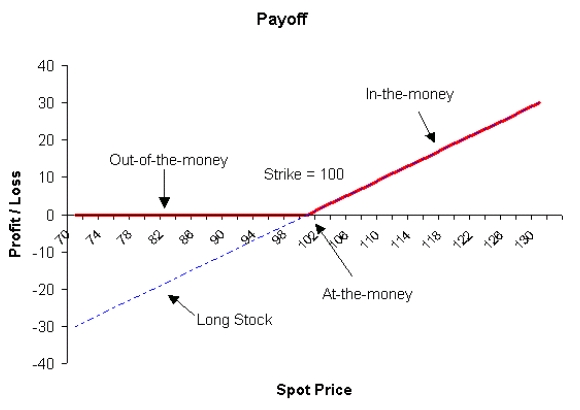Stock options are a classic form of equity compensation. Although both stock options and restricted stock vest over time, only stock options give corporate executives the discretion to act on their options as they see fit. The only limitation is the window executives have to exercise their stock options, which opens once the grant vests and closes ten years after the grant was awarded.
Unfortunately, many executives do not take advantage of this flexibility and control when it comes to their stock options. Instead, they tend to exercise options in reaction to some other event, such as the need for liquidity to fund a large purchase (house, car, or college tuition) or because the stock option grant is about to mature. The latter creates a hard use-it-or-lose-it deadline for exercising those stock options.
Exercising Proactively
By falling back on reactive moves rather than leveraging proactive planning, executives are missing out on an important financial planning opportunity. Ideally, executives will always sell shares from their exercised options strategically at an optimal price. Through proactive planning, it is possible to identify the minimum threshold at which an option grant has realized a fair value to the option holder–that is, the most “juice in the squeeze.”
That “juice” is there for the taking if you use an analytical approach to identifying the best time to exercise stock options based on the intrinsic value of the options. Stock options have a unique contingency feature called a strike price or grant price, which is generally the market price of the stock on the day the stock options are granted. The strike price acts like a line in the sand when calculating the intrinsic value of each grant. When the underlying stock is trading below an option’s strike price, the option has zero intrinsic value and is deemed worthless on paper. On the other hand, if the shares are trading above the strike price, the grant’s intrinsic value is based on the magnitude of the spread differential, which is calculated as the current market price minus the strike price. Time value is a second, and less transparent, component of option valuation.

Source: https://financetrain.com/option-payoff-diagrams
Companies grant stock options to allow executives and other key talent to benefit from stock price appreciation. One of the key benefits to stock options is the leverage they offer as the underlying stock initially ascends above the strike price. However, just like an accelerating car that eventually reaches maximum speed, the effects of leverage diminish as the stock price goes up. The further an option travels from its strike price, the more it performs like the underlying stock.
The key is to use this information to identify the sweet spot for exercising stock options. Let’s say XYZ Inc. has a stock price of $101/share and recently granted stock options to its executive team with a strike price of $100/share. This grant is “in the money” with $1/share of intrinsic value. If the price of XYZ stock increases another $1/share to $102/share, the option would then have $2/share of intrinsic value.
While the second $1 increase in price from $101 to $102 barely translates into a 1% increase in value for the underlying stock, it represents a 100% increase in value for the option (from $1 to $2 of intrinsic value). The following chart calculates the intrinsic value of these stock options if XYZ stock increased to $115/share. As you can see, each incremental $1/share increase in market price dilutes the relative return for the option.
Making The Sell Decision
As a general rule, we recommend exercising stock options and selling the resulting shares once the intrinsic value of your option grant exceeds 180% of the option’s strike price. We believe this milestone represents the point at which most of the juice is squeezed. However, it is important to combine this general rule with both fundamental and technical analysis to ensure you’re evaluating the decision from all angles. Whether exercising options or trading in your portfolio, the best outcomes generally arise when multiple forms of analysis point toward the same trade recommendation.
This approach has another benefit. It helps to ensure that stock option grants do not “outstay their welcome” in your portfolio. By using an objective framework to decide when to exercise option grants, you can execute any resulting trades with confidence. You can also avoid the opportunity cost of diminishing leverage and reduce the risk from what is probably an already concentrated position in company stock.
If you are trying to decide when to exercise stock options and would like some advice, reach out to your Blue Chip Partners advisor. We are here to help you get the most life out of your wealth.
Expressions of opinion are as of this date and are subject to change without notice. The information provided does not constitute tax, legal, accounting, or other professional advice and is without warranty as to the accuracy or completeness of the information. Any information provided is not a complete summary or statement of all available data necessary for making an investment decision and does not constitute a recommendation to buy, hold or sell any security. The information has been obtained from sources considered to be reliable, but we do not guarantee that the foregoing material is accurate or complete. There are limitations associated with the use of any method of securities analysis. Indices are included for informational purposes only; investors cannot invest directly in any index. Every investor’s situation is unique, and you should consider your investment goals, risk tolerance and time horizon before making any investment. Prior to making an investment decision, please consult with your financial advisor about your individual situation. Past performance does not guarantee future results. Investing involves risk and you may incur a profit or loss regardless of strategy selected. There is no guarantee that any statements, opinions or forecasts provided herein will prove to be correct.